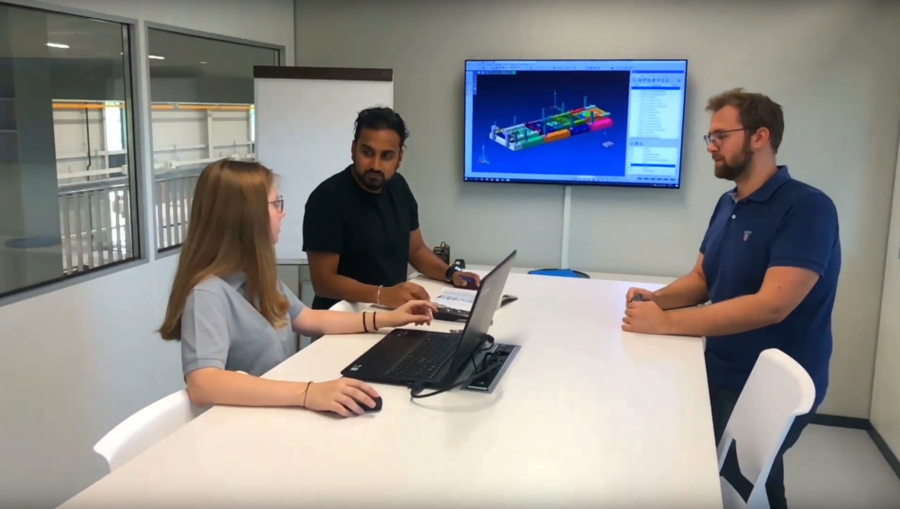The job profile: Design engineer, Swiss Federal Certificate of Competence (EFZ)

Job description
- Development of punching and forming tools as well as production fixtures.
- Development of injection moulding tools in mould making
- Creation of drawings (CAD) and bills of materials (BOM)
- Support of customer projects
- Changes to existing tools and their documentation
Prerequisites
- Completed secondary or high school with good results in mathematics and physics
- Interest in technical topics and mechanics
- Understanding of abstract relationships
- Good spatial awareness
- Interest in working with computers
- Precise and careful approach to work
- Patience and perseverance
- Reliability
- Ability to work in a team
Training
Training duration 4 years
Practical training
Practical basic training takes place in-house and is supplemented by company courses
Basic training (first and second year of the apprenticeship)
Workpieces are produced independently as part of a six-month production internship. In this way design engineers learn about material behaviour and the characteristics of different production methods. Moreover, they also prepare documents that describe a technical product in full and thus enable its production. These include standard production documents such as drawings and BOMs, but also assembly and operating instructions. Technical products are designed in such a way that they meet the requirements of production and their function and can be produced as economically as possible.
Main training (third and fourth year of the apprenticeship)
In the main training, previously acquired skills and knowledge are deepened and consolidated by application in productive work. The choice of areas of application (competencies) depends on the options in the apprenticeship programme and on your inclinations and abilities. In this respect, design engineers build up at least two competencies.
Theoretical training
Classes are at level E (extended requirements)
Two days per week in the first and second apprenticeship years and one day per week in the third and fourth apprenticeship years
Inter-company courses
During the first two apprenticeship years, apprentices attend inter-company courses in which they are taught the basic skills.
Basic courses
The basic courses such as technical drawing, design technology, design methods and production engineering are taught in the first two apprenticeship years.
Supplementary courses
In general, supplementary courses are also usually conducted in the first two apprenticeship years. Typical supplementary courses include automation, electrical manufacturing and training methods.
Completion
After passing the final apprenticeship examination, you will receive a (Swiss) Federal Certificate of Competence with the title Design engineer, EFZ.
Career perspectives
Vocational baccalaureate
If you have very good school results, you can also attend the high school equivalency school during or after the initial vocational training. The vocational baccalaureate obtained there entitles access to the technical colleges, depending on the course of study, either without examination or with admission procedures.
Further education options
The mechanical engineering, electrical engineering and metalworking industries are varied and global. Basic training as a design engineer opens up many opportunities both in Switzerland and abroad.